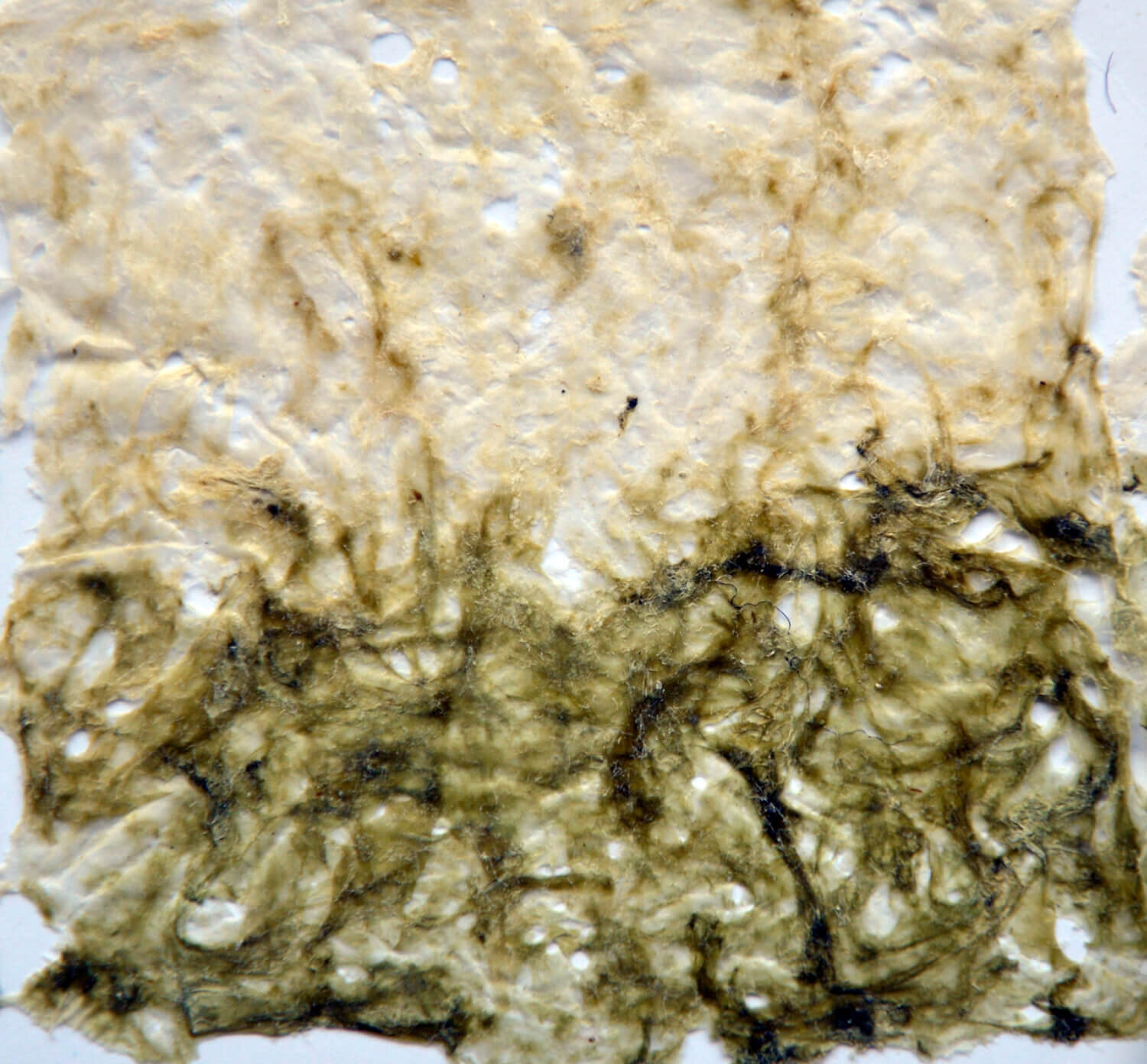How long will seaweed paper artworks last?
Some notes on the longevity of seaweed paper
People often ask me how long my seaweed paper will last. Obviously no one wants to invest in artwork which will disintegrate within a few years. I do not have any absolute answers, but I will share what I have learned. I will make a distinction between pressed seaweed and seaweed paper, and between the longevity of the structural integrity versus the colour.
Unprocessed seaweed exposed to the elements will either rot and break down, or dry and break up, just like other plants. Aboriginal women used seaweed sculpturally to make baskets and containers which they preserved using their secret recipe, which I think involved oil.
Pressing seaweed gives protection from moisture, and if kept in the dark it will also be protected from light and UV radiation, so it will keep more or less indefinitely. I have heard that there are some nineteenth century pressed seaweed collections still in excellent condition. I myself have samples of pressed seaweeds that are about 40 years old which are still in pristine condition.
Making paper from seaweed sterilises and changes the nature of the seaweed, although I don’t really know much about the chemistry. In most other plants used for paper making, the paper is much more long lasting than the dried plant material, and I see no reason that paper made from seaweed would be any different.
Archival quality paper is always made acid free, as presumably acid can cause degradation, so I always test the pH of my pulp before using it, and I make sure it is pH neutral.
The main other sources of damage, apart from mechanical damage, are light and UV radiation, which would be a problem with any paper. If seaweed paper is protected from mechanical damage, moisture, acid, light and UV radiation, I see no reason why it would not last indefinitely, or as long as other papers, although I have no proof. My earliest attempts are now 9 years old, and they are still fine, and unchanged structurally.
Of course there is not much point making beautiful artworks only to store them in the dark where no one sees them! The works that I exhibit are all framed behind glass or Perspex, or coated with high quality resin. They are protected from UV radiation either with a UV protective spray, or with UV protection in the glass, Perspex or resin, or both, and I advise people not to hang the work in direct sunshine. Normal lighting does not seem to be a problem. The first major body of work I made from seaweed paper was my Neva series, and most of this has been sold, but the few pieces which I have left are still structurally sound.
Colour and fading is a different matter. I have made numerous experiments to see if I could find a method to prevent the fading of paper made from green and red seaweeds. I have tried everything I can think of or has been suggested to me, but the best I have been able to achieve is a slowing of the fading in a some cases. So now I just accept that that is part of the life of the artwork. The tonal variation in the work is still maintained, and the browns do not fade.
Here are some examples of paper samples made from green seaweeds. Half of each paper has been exposed to sunshine on my windowsill (behind glass) for several years. The fading of these seaweed papers is quite marked, but the faded pale paper is, I think, just as beautiful as the initial green paper.

